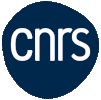Seminar – Application potential of GMR, TMR magnetic field sensors: a research institute perspective (March 03rd, 2022)

On Tuesday, March 15th at 11:15 Dr. Patrick Matthes from Fraunhofer-Institute for Electronic Nano Systems will give a seminar entitled: Application potential of GMR, TMR magnetic field sensors: a research institute perspective Place : CEA Bat. 10.05 Room 445 (limited to persons having a CEA Badge) skype link : https://webconf.cea.fr/ioan-lucian.prejbeanu/C89D5FFJ if this link does not […]
Read moreBiocompatible magnetic microparticles for cancer cells destruction (February 04th, 2022)

We present a new type of biocompatible surface-functionalized magnetic microparticles for cancer cells destruction. The magnetite particles, covered with polyethylene glycol molecules, are shown to favor cell-death via apoptosis when set into vibrations by alternating magnetic field. A team from SPINTEC, in collaboration with researchers from SyMMES, has recently developed a new type of […]
Read moreSeminar – Measurements of spin structures, textures and waves with neutrons (January 03rd, 2022)

On Friday 28 January, at 10:00, we will have the pleasure of hosting a series of 3 online seminars of 30 min + 10 min for questions each, given respectively by Ketty Beauvois (CEA), Stéphane Raymond (CEA) and Thomas Saerbeck (ILL) with the aim of showing/reminding us of the possibilities of measurements in terms of […]
Read moreSeminar – Understanding cancer cell reactions to mechanical stress : towards new magnetism-based therapies (December 17th, 2021)

On Friday, January 14th at 11:00 Pr. François Berger BrainTech Lab Director Inserm and Univ. Grenoble Alpes will give us a seminar entitled: Understanding cancer cell reactions to mechanical stress : towards new magnetism-based therapies Place : CEA Bat. 10.05 Room 445 (limited to persons having a CEA Badge) skype link : https://webconf.cea.fr/ioan-lucian.prejbeanu/C89D5FFJ if this […]
Read moreSeminar – Magnetic Josephson Junctions for artificial synapses (December 09th, 2021)

On Wednesday, May 11th at 10:30 Emilie Jué from Univ. of Colorado Boulder and NIST will give us a seminar entitled: Magnetic Josephson Junctions for artificial synapses Place : CEA Bat. 10.05 Room 445 (limited to persons having a CEA Badge) skype link : https://webconf.cea.fr/ioan-lucian.prejbeanu/C89D5FFJ if this link does not work see below (*) Abstract: […]
Read moreSTOCHNET – An ANR project (December 09th, 2021)

STOCHNET stands for Hybrid Stochastic Tunnel Junction Circuits for Optimization and Inference. The motivation behind StochNet is to explore — through experimental demonstrations with hybrid CMOS stochastic tunnel junction circuits and simulations of theoretical architectures — the technological feasibility of recently explored brain inspired computing frameworks that point towards neural stochasticity as being fundamental to […]
Read more24 months postdoc position – spintronic unconventional computing using stochastic magnetic tunnel junctions (December 02nd, 2021)

In the frame of the joint US-French NSF-ANR project StochNet, Spintec laboratory is opening a postdoctoral researcher position. The candidate will work on stochastic magnetic tunnel junctions grown and fabricated at Spintec, and will use them to explore brain-inspired schemes promising for building energy-efficient computing hardware. The project will have a strong interdisciplinary aspect (Spintronic, […]
Read moreRoom-temperature ferroelectric switching of spin-to-charge conversion in GeTe (November 30th, 2021)

The broken inversion symmetry of some semiconductors may allow for spin–charge interconversion, but its control by electric fields is volatile. This has led to interest in ferroelectric Rashba semiconductors, which combine semiconductivity, large spin–orbit coupling and non-volatility. Here we report room-temperature, non-volatile ferroelectric control of spin-to-charge conversion in epitaxial germanium telluride films. Spintronics could potentially […]
Read moreDzyaloshinskii–Moriya Interaction and Skyrmion States at 2D Materials/Co Interfaces (November 25th, 2021)

Significant Dzyaloshinskii–Moriya interaction (DMI) and perpendicular magnetic anisotropy (PMA) at interfaces comprising hexagonal boron nitride (h-BN) and cobalt (Co) remaining stable over a large range of Co film thickness are reported. Furthermore, it is demonstrated that that such significant DMI and PMA give rise to the formation of skyrmions with small applied external fields. Interfacial […]
Read moreA new spintronic memristive component for neuromorphic circuits (November 18th, 2021)

Neuromorphic computing is a bio-inspired technology which aims at mimicking the brain working principles. It can be used for fast and energy-efficient applications through the implementation of networks of artificial neurons and synapses. Artificial synapses are implemented as electronic components called memristors. These are non-volatile memory devices whose resistance can take several intermediate values between […]
Read more



